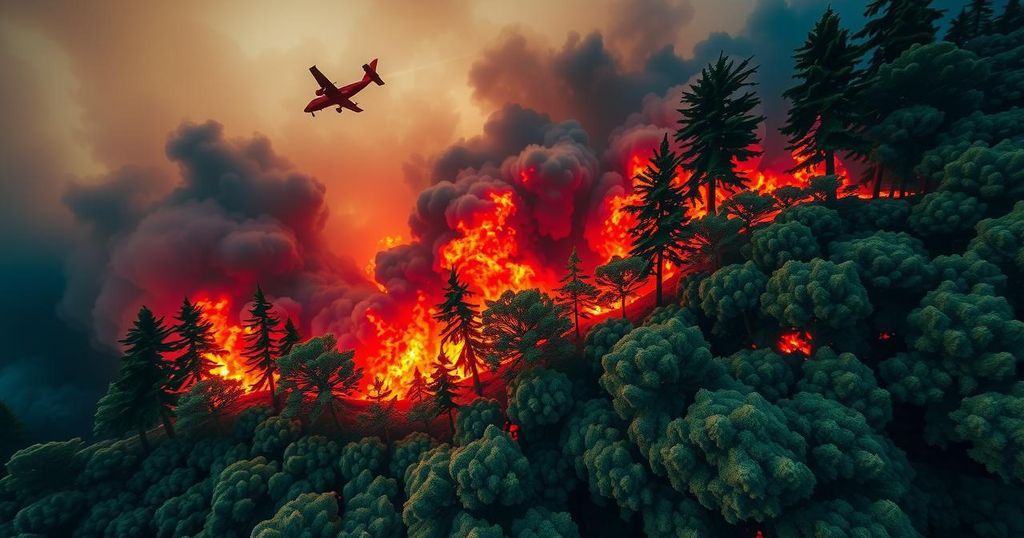Extreme Heat Sear Cities Across Pakistan
Pakistan faces extreme heat as cities in Punjab report record temperatures exceeding 45°C, with Jacobabad hitting 49°C. The heatwave is expected to persist, causing public health concerns and prompting government directives for relief measures and hydration efforts. Hospitals see rising heatstroke cases, especially among vulnerable groups, while authorities emphasize the importance of staying indoors and avoiding strenuous activity.
Extreme heat has taken hold across Pakistan, with nearly every city in Punjab witnessing temperatures soar above 45 degrees Celsius. Bhakkar and Jacobabad led the way with highs reaching a blistering 49°C. The Pakistan Meteorological Department does not foresee any immediate relief from the sweltering weather, indicating hot and dry conditions will persist throughout the region today.
In its latest advisory, the Meteorological Department stated: “Mainly hot and dry weather is expected in most parts of the country, while very hot in plain areas.” Among the additional forecasts, the agency noted potential for dust-raising winds in the afternoon and some isolated rain or thunderstorms in the northern regions.
The Provincial Disaster Management Authority (PDMA) announced extreme temperature readings throughout Punjab, with Sargodha reaching 47.8°C and Gujranwala at 47.5°C. Meanwhile, Lahore registered 46.2°C. In contrast, the hill station of Murree provided some relief with a mere 32°C. Other regions are not faring much better, as Jacobabad’s mercury also recorded 49°C while Mohenjo-Daro simmered at 48°C and Karachi faced uncomfortable conditions with 40°C and high humidity.
The heat has effectively paralyzed daily activities across the country. Markets have emptied, and outdoor vendors and laborers are particularly struggling. Commenting on the situation, Muhammad Asif, a rickshaw driver in Lahore, expressed frustration, stating, “The heat is unbearable. Even standing in the shade feels like being in an oven.”
Hospitals in Punjab have reported rising heatstroke cases, particularly among vulnerable populations such as laborers, children, and the elderly. The authorities set up specialized treatment counters in public hospitals to manage the influx of cases and ensure that patients can access necessary care. Intermittent power outages further compound the crisis, leaving many residents without cooling solutions.
In response to the ongoing heatwave, the National Disaster Management Authority (NDMA) has alerted provincial departments for heightened vigilance. Nabil Javed, the Punjab Relief Commissioner, issued clear directives to local authorities, including provision of cool drinking water in public areas and the stocking of essential medical supplies for heat-related illnesses.
Beyond immediate measures, health advisories have been circulated, advising the public to remain hydrated, limit outdoor exposure during peak temperatures, and recognize heatstroke symptoms. Vulnerable groups, especially children and the elderly, are being closely monitored and are advised to stay in cooler environments as much as possible.
Additionally, residents are reminded to wear light clothing and avoid strenuous activities outdoors. If any heat-related issues arise, the public can reach out to the PDMA’s emergency help line at 1129. The Met Department warns that no respite from the harsh conditions is on the horizon, with the heatwave expected to linger for an additional 48 to 72 hours. PDMA Director General Irfan Ali Kathia has underscored the seriousness of the situation, labeling it life-threatening for those most vulnerable.
With an extreme heatwave currently affecting Pakistan, temperatures are reaching alarming levels, particularly in Punjab. Authorities are taking necessary precautions to ensure public safety, including setting up medical assistance and distributing water. However, the situation remains critical, especially for vulnerable populations who are at greater risk of heat-related illnesses. As the heatwave is predicted to last, public health advisories stress the importance of precautions to mitigate risks. Immediate relief does not appear to be forthcoming, indicating a challenging situation ahead for many in the affected areas.
Original Source: asianews.network




Post Comment